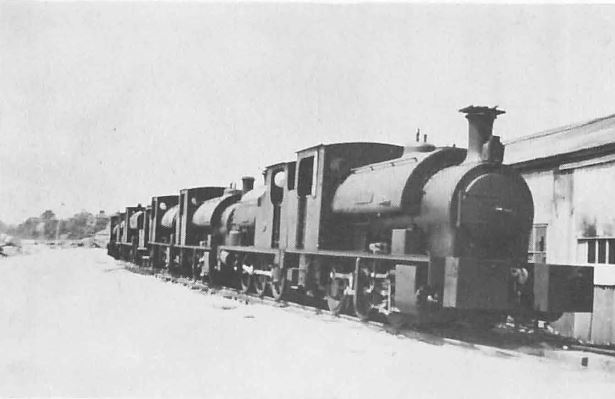
BRC Website Home
Quainton Virtual Stockbook
Quainton News Archive - Quainton News No. 17 - September 1973
Hunslet 0-6-0 ST No. 47160 - Cunarder
How Cunarder Got it's Name - recollections of the Editor

BRC Website Home
Quainton Virtual Stockbook
Quainton News Archive - Quainton News No. 17 - September 1973
Hunslet 0-6-0 ST No. 47160 - Cunarder
How Cunarder Got it's Name - recollections of the Editor

Photo: |
|
On 26th July 1933 His Majesty King George V was pleased to declare open the largest graving dock in the world when he visited Southampton, accompanied by HM the Queen. The great graving dock was named the King George V dock and it formed a part of the Southern Railway's comprehensive scheme of expansion which included reclamation of over 400 acres of mudland and the construction of a new quay 7500 feet in length across the bay in the River Test between Southampton West and Millbrook stations on the main line to Bournemouth. The graving dock is 1200 feet long 165 feet wide and has a height from the floor to the coping stones of 59 feet. The thickness of concrete of the floor is 25 feet. These statistics are given to show what an enormous task confronted the civil engineers who were awarded the contract, John Mowlem & Son Ltd and Edmund Nuttal Son & Co. (London) Ltd. Work started in 1931 and I can remember the way the soil was removed by excavators and loaded into timber bodied tip wagons hauled by the sturdy tank engines in trains of six or eight. The rail tracks were flat bottomed and spiked to sleepers laid across the land being reclaimed between the main line and the new quay wall. As the depth of the excavation became deeper the gradients became more severe and the barking exhausts of the engines could be heard all over Southampton day and night intermingled with the pounding of pile drivers and the squealing protests of the dredgers. The graving dock was built at the same time as that wonderful liner, the RMS Queen Mary, was being constructed on the Clyde for the Cunard Steamship Company, and the project was very necessary because the largest ship which could be accommodated at Southampton before 1933 was a vessel of 60,000 tons whereas the Queen Mary was to be 81,237 tons gross. When Mowlem's ordered six 0-6-0ST's for their contract at Southampton it was therefore natural that they should choose names which were associated with the job the engines would be doing. So they called one engine Cunarder, another Southern, others Millbrook and Southampton. Not all the locomotives were built especially for the contract. Two of special interest were Blythe, an 0-6-0ST which had worked on the Nidd Valley Railway in Yorkshire and another was an 0-4-0ST formerly on the Lancashire and Yorkshire Railway. This latter engine is still in existence on the Keighley and Worth Valley Railway. When the work was done and the engines and pile drivers and dredgers were still and quiet the long line of tank locomotives stood at Millbrook awaiting disposal at a point where the present day freightliner depot stands. Cunarder went away to another Southern Railway contract, the Dover train ferry dock. Its subsequent wanderings are recorded in our stockbook but it is interesting to reflect that the liner associated with the engine is also preserved, in the United States, but not, like the Quainton Cunarder, in working order. |
|
Notes: Reference: |
Text © Quainton Railway Society / Photographs © Quainton Railway Society or referenced photographer
Email Webmaster
Page Updated: 21 October 2017